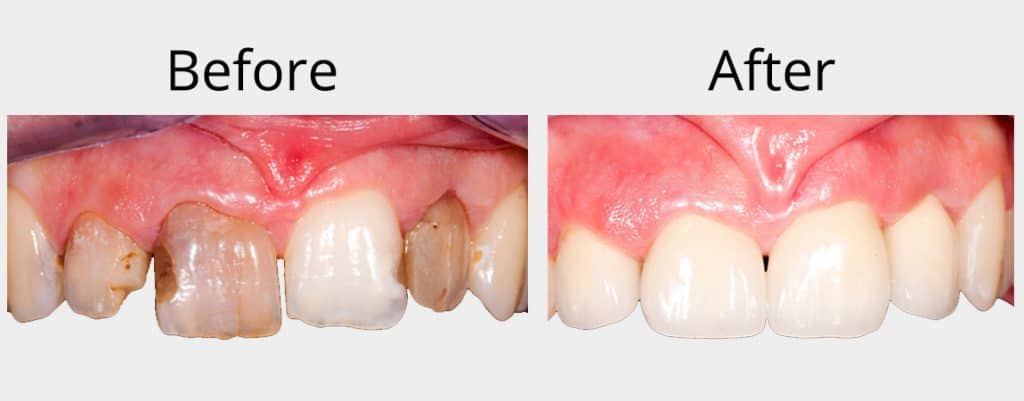
What are Dental Crowns and Tooth Bridges?
A custom-made crown or “cap” completely covers the top of a tooth. Crowns not only repair and strengthen a damaged tooth but can improve the appearance. Bridges are similar to crowns but they replace one or more missing teeth making it easier to chew and also enhance the appearance.
How do Crowns work?
A crown is used to entirely cover or “cap” a damaged tooth. Besides strengthening a damaged tooth, a crown can be used to improve its appearance, shape or alignment. A crown can also be placed on top of an implant to provide a tooth-like shape and structure for function. Porcelain or ceramic crowns can be matched to the colour of your natural teeth.
Other materials include gold and metal alloys, acrylic and ceramic. These alloys are generally stronger than porcelain and may be recommended for back teeth. Porcelain bonded to a metal shell is often used because it is both strong and attractive.
A Crown may be recommended to:
- Replace a large filling when there isn’t enough tooth remaining
- Protect a weak tooth from fracturing
- Restore a fractured or cracked tooth
- Attach a bridge
- Cover a dental implant
- Cover a discoloured or poorly shaped tooth
- Cover a tooth that has had root canal treatment
How do Bridges Work?
A bridge may be recommended if you’re missing one or more teeth. Gaps left by missing teeth eventually cause the remaining teeth to rotate or shift into the empty spaces, resulting in a bad bite. The imbalance caused by missing teeth can also lead to gum disease and temporomandibular joint (TMJ) disorders.
Bridges are commonly used to replace one or more missing teeth. They span the space where the teeth are missing. Bridges are cemented to the natural teeth or implants surrounding the empty space. These teeth, called abutments, serve as anchors for the bridge. A replacement tooth, called a pontic, is attached to the crowns that cover the abutments.
As with crowns, you have a choice of materials for bridges. Your dentist can help you decide which to use, based on the location of the missing tooth (or teeth), its function, aesthetic considerations and cost. Porcelain or ceramic bridges can be matched to the colour of your natural teeth.
NOTE: Your dentist may recommend implants as a means of replacing missing teeth. Implants can replace missing teeth without the need to touch or restore adjacent teeth next to space. Please refer to the section on Dental Implants.
How are Crowns and Bridges Made?
Before either a crown or a bridge can be made, the tooth (or teeth) must be reduced in size so that the crown or bridge will fit over it properly like a thimble fitting over a peg. After reducing the tooth/teeth, your dentist will take an impression to provide an exact mould for the crown or bridge. If porcelain is to be used, your dentist will determine the correct shade for the crown or bridge to match the colour of your existing teeth.
Using this impression, a dental lab then makes your crown or bridge, in the material your dentist specifies. A temporary crown or bridge will be put in place to cover the prepared tooth while the permanent crown or bridge is being made. When the permanent crown or bridge is ready, the temporary crown or bridge is removed, and the new crown or bridge is cemented over your prepared tooth or teeth.

Cracked Tooth
Crown Process Anterior
Laser Troughing
Bridge Bone Loss
Maryland Bridge
Bridges
